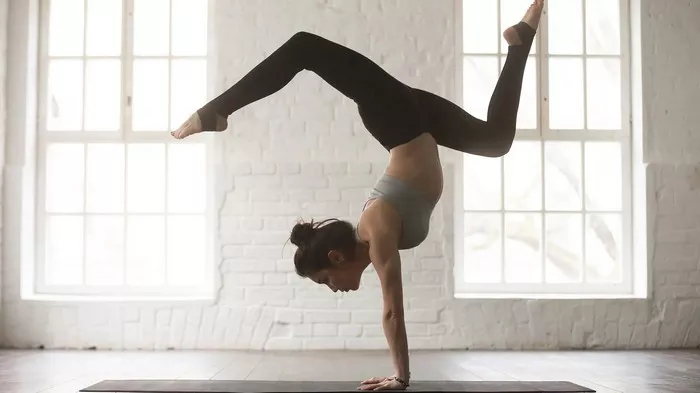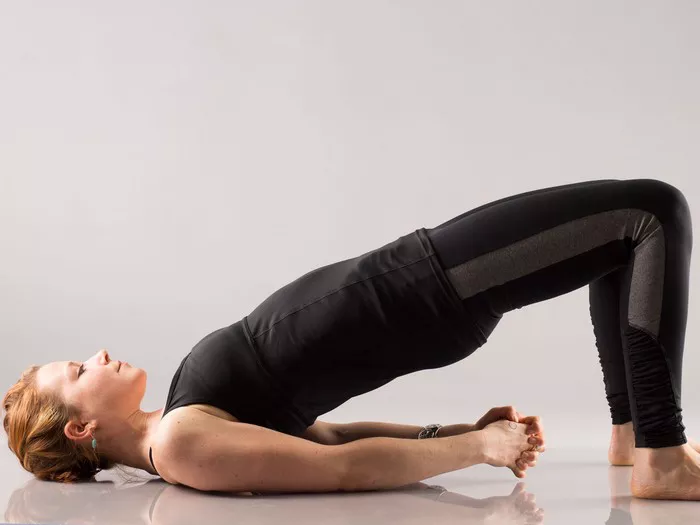Hot yoga, also known as Bikram yoga, involves practicing yoga poses in a heated room typically set between 95 to 105 degrees Fahrenheit. While some may find the idea of exercising in such conditions daunting, many practitioners swear by the benefits, both physical and mental. In this article, we will explore the relationship between hot yoga and anxiety relief, delving into the science behind it and offering practical tips for incorporating it into your wellness routine.
Understanding Anxiety:
Before we dive into the specifics of hot yoga, it’s essential to understand what anxiety is and how it manifests in the body and mind. Anxiety is a natural response to stress, characterized by feelings of worry, fear, and apprehension. While occasional anxiety is a normal part of life, persistent or excessive anxiety can have detrimental effects on one’s well-being.
Physiologically, anxiety triggers the body’s stress response, also known as the “fight or flight” response, leading to an increase in heart rate, shallow breathing, muscle tension, and other physical symptoms. Over time, chronic anxiety can contribute to a host of health problems, including cardiovascular issues, digestive disorders, and weakened immune function.
Yoga as a Therapeutic Tool:
Yoga, an ancient practice originating from India, has gained widespread popularity in recent decades for its myriad health benefits. From improved flexibility and strength to enhanced mental clarity and emotional well-being, the effects of yoga extend far beyond the physical realm. The combination of breath work, meditation, and movement in yoga promotes relaxation, reduces stress, and cultivates a sense of inner peace.
Numerous studies have demonstrated the efficacy of yoga in managing anxiety and related conditions. A meta-analysis published in the Journal of Alternative and Complementary Medicine found that yoga interventions significantly reduced anxiety levels across various populations, including individuals with clinical anxiety disorders. Additionally, research indicates that regular yoga practice can modulate the body’s stress response, leading to lower cortisol levels and greater resilience to stressors.
The Benefits of Hot Yoga for Anxiety:
While all forms of yoga offer therapeutic benefits for anxiety, hot yoga presents a unique opportunity to deepen the mind-body connection and promote relaxation through the combination of heat, movement, and breath awareness. Here are some of the ways in which hot yoga can be particularly beneficial for anxiety relief:
1. Enhanced Relaxation Response: The heat in a hot yoga studio induces vasodilation, causing blood vessels to widen and blood flow to increase. This process can promote a state of relaxation and facilitate the release of tension held in the body. As practitioners move through the yoga poses, they are encouraged to focus on their breath, fostering mindfulness and calming the nervous system.
2. Detoxification: Sweating is a natural mechanism by which the body eliminates toxins and impurities. In a hot yoga class, the profuse sweating induced by the heat helps to cleanse the body from the inside out, leaving practitioners feeling refreshed and rejuvenated. This detoxifying effect can extend beyond the physical realm, providing a sense of mental clarity and emotional purification.
3. Increased Mindfulness: Practicing yoga in a heated environment requires heightened awareness and concentration. As practitioners navigate the challenges of balancing, stretching, and breathing in the heat, they are encouraged to stay present in the moment and let go of distracting thoughts. This cultivation of mindfulness can help individuals with anxiety learn to observe their thoughts and emotions without judgment, ultimately reducing the power of anxious rumination.
4. Stress Reduction: Engaging in physical activity, such as yoga, has been shown to reduce levels of stress hormones like cortisol and adrenaline. The combination of heat and movement in hot yoga can amplify this stress-reducing effect, promoting a sense of calm and well-being. Moreover, the endorphins released during exercise act as natural mood enhancers, further alleviating symptoms of anxiety and depression.
5. Improved Sleep Quality: Anxiety often disrupts sleep patterns, leading to insomnia and restless nights. Regular participation in hot yoga classes can help regulate sleep-wake cycles and promote restful sleep. The relaxation techniques learned in yoga, coupled with the physical exhaustion from the practice, can facilitate a deeper and more restorative sleep, allowing individuals to wake up feeling refreshed and rejuvenated.
Practical Tips for Practicing Hot Yoga Safely:
While hot yoga offers numerous benefits for anxiety relief, it’s essential to approach the practice mindfully and prioritize safety. Here are some practical tips for practicing hot yoga safely and effectively:
1. Stay Hydrated: The heat and humidity in a hot yoga studio can lead to significant fluid loss through sweating. It’s crucial to drink plenty of water before, during, and after your practice to stay hydrated and prevent dehydration. Consider bringing a water bottle with you to class and taking regular hydration breaks as needed.
2. Listen to Your Body: Pay close attention to your body’s signals during hot yoga, especially if you’re new to the practice or have any underlying health conditions. If you feel dizzy, lightheaded, or nauseous at any point, take a break, and rest in Child’s Pose or Corpse Pose until you feel ready to resume. Pushing yourself too hard in the heat can increase the risk of injury and exacerbate anxiety symptoms.
3. Take Frequent Breaks: Don’t hesitate to take breaks during your hot yoga practice, especially if you’re feeling overwhelmed or fatigued. Step outside the studio if needed to cool down and catch your breath before returning to class. Remember that it’s okay to modify or skip poses that feel too intense, and always honor your body’s limits.
4. Practice Proper Breathing: Breath awareness is fundamental in yoga, particularly in a heated environment where it can be easy to become breathless or anxious. Focus on deep, diaphragmatic breathing throughout your practice, inhaling and exhaling slowly and evenly. Utilize cooling breath techniques like Sitali Pranayama (the cooling breath) to help regulate body temperature and calm the nervous system.
5. Dress Appropriately: Wear lightweight, breathable clothing that allows for freedom of movement and helps wick away sweat. Avoid heavy fabrics or excessive layers that can trap heat and impede your practice. Consider bringing a towel to place over your yoga mat for added grip and to absorb sweat during your practice.
Conclusion
In conclusion, hot yoga offers a holistic approach to anxiety relief, addressing both the physical and psychological aspects of the condition. By practicing yoga in a heated environment, individuals can experience enhanced relaxation, increased mindfulness, and improved overall well-being. However, it’s essential to approach hot yoga mindfully, prioritize safety, and listen to your body’s needs. With regular practice and dedication, hot yoga can be a valuable tool in the management of anxiety, empowering individuals to cultivate inner peace and resilience in the face of life’s challenges.























